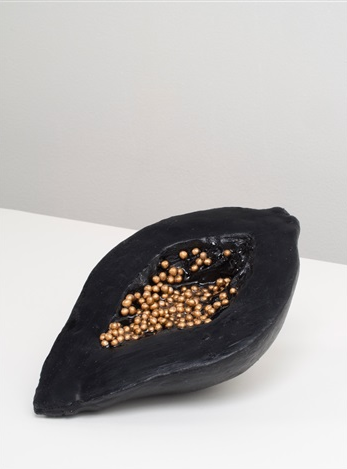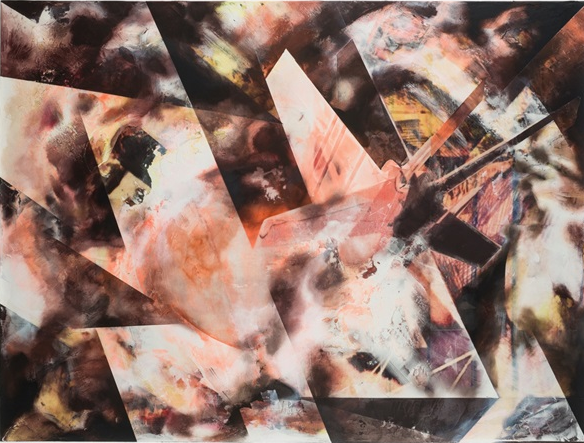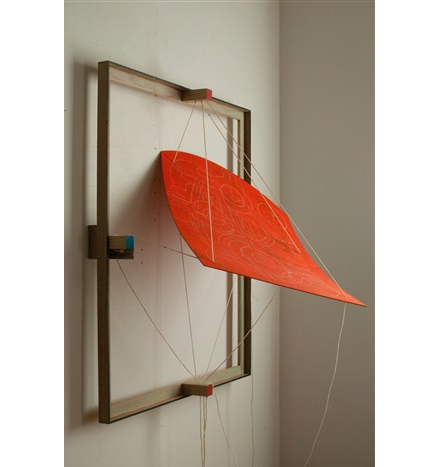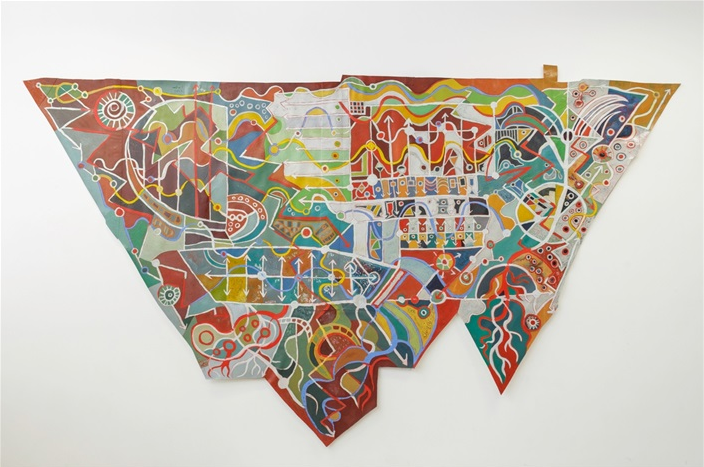People
artnet Asks: Curator Dexter Wimberly on Creating Community in a Globalized World
How the curator’s process fits multiple perspectives into one show.

How the curator’s process fits multiple perspectives into one show.

Artnet Galleries Team

Dexter Wimberly’s curatorial practice works to bring together artists of different backgrounds into one unified creative space. He manages to create a cohesive show where each work interacts with the other, in a way that visually alludes to global exchange. His current show “A Fast, Moving Sky” presents multiple perspectives on the African diaspora and its influence on people, culture, and art.
Wimberly is no stranger to forging a unified artistic front against the odds. As the newly appointed executive director of Aljira, a center of contemporary art in Newark, NJ, the curator has revitalized a community of artists that appeared to be fading out of relevance. By harnessing the power that can be found in a local community, Wimberly uses his curatorial skill and influence to bring a small group of artists to an international stage, as can be seen in many of his shows.

Rushern Baker,Crashing Drone II (2017). Courtesy of The Third Line gallery.
Tell us about your process.
My curatorial process involves a significant amount of research. I don’t solely research art history. I look at how contemporary art is influenced by the important issues of the day. I entered the art world with artists themselves as my primary inspiration. They were my first allies and taught me about the challenges of being an artist.
Once I have a concept for an exhibition, I think of the artists that will be the most appropriate to bring that concept to life. I take my time. It’s not a process about making things fit. There must be a rhythm and a feeling that excites my imagination. If not, I can’t see anyone else being interested. I try to see my own shows the way a visitor would.
Is there any show in particular that has influenced your curatorial practice?
The first significant exhibition I organized was “The Gentrification of Brooklyn: The Pink Elephant Speaks” (2010), a group show at the Museum of the African Diaspora (MoCADA) located in Fort Greene, Brooklyn. The exhibition included the work of 20 artists living and working in Brooklyn who had been directly affected by the rampant real estate development and rent increases taking place in the borough.
I was born and raised in Brooklyn, so the exhibition was particularly meaningful to me. It was also a rather large group show requiring a tremendous amount of planning and artist relations. The show attracted a large audience and received great press coverage, inspiring me to push my curatorial practice forward.

Andrew Lyght, AF034 Drawing Sculpture
(2016-2017). Courtesy of The Third Line Gallery.
How did you approach your current show “A Fast, Moving Sky” at The Third Line?
“A Fast, Moving Sky” highlights four contemporary artists from the African diaspora whose work confronts Western ideals of abstract painting, drawing, and sculpture. The artists include Rushern Baker, Leonardo Benzant, Andrew Lyght, and Valerie Piraino. I’ve been following each of them very closely for the past few years. “A Fast, Moving Sky” is inspired by international movement and travel, the way people traverse the globe to influence cultures different than their own.
The concept of the exhibition is born out of my own interactions with people of African descent around the world who reflect a wide range of lifestyles and cultural traditions. The works presented in the exhibition were selected to create a fluid space where notions of a monolithic or singular Black or African art aesthetic can be challenged. “A Fast, Moving Sky” is my first exhibition in Dubai, and I can’t think of a better city for such an international concept.

Leonardo Benzant, The Mothership (2017). Courtesy of The Third Line gallery.
Newark is emerging as an artistic and cultural hub after decades of negative stigma. As recently appointed executive director of Aljira, what are your hopes for the city, and how do you plan to contribute in this new role?
Eight months ago, I became the executive director of Aljira, a Center for Contemporary Art in Newark. I’m getting to know the city, and I’m very excited to be part of the changes taking place there. Aljira has been around for 34 years, and I’m the first new director since its founding in 1983. There are a lot of people talking about the growing art scene in Newark. However, Newark has a long and deep history of artists and creative thinkers. Aljira has been a key part of that history. My goal is to continue growing Aljira’s audience locally and internationally, as well as to work with artists who want to realize ambitious projects.
You seem to be interested in curating shows about specific artists and communities. Was there any experience that inspired you to curate this way?
In 1998, I became friends with Ivan Karp, the New York art dealer who helped find, popularize, and market the Pop artists of the 1960s, including Andy Warhol, Roy Lichtenstein, and Robert Rauschenberg. Ivan was 72 years old when I met him. At the time, I was still running my advertising agency, and was a regular at the cigar shop Ivan co-owned on West Broadway in SoHo, New York City. The cigar shop was adjacent to his gallery, O.K. Harris.
At the time, I did not imagine that I would become a curator. However, before Ivan’s passing in 2012, I had countless conversations with him about the New York art scene in the 1960s, as well as what it takes to discover new talent. I guess Ivan Karp influenced me in ways I didn’t realize at the time.

Valerie Piraino, Objet Trouvé II (2016). Courtesy of The Third Line gallery.
How has your “curating taste” changed?
My curating taste has remained consistent over the years. I’m open to all forms of art. My personal interests include history, law, and economics. These interests inform my practice. I’ve been very prolific in terms of the number of exhibitions I’ve organized and the number of artists I’ve collaborated with. There are two reasons for this, the first is that I am always seeking opportunities to show great work—I can sometimes be very romantic about art—and I realized many years ago that what I can offer in terms of connections to talented artists, fresh ideas for exhibitions, and my communications experience, is very valuable to galleries and art institutions. The second reason is that I have the interest and energy to work at a heightened pace. It’s not a race to do more than anyone else; it’s simply my desire to do as much good work as possible.
What are your upcoming projects?
We [the Aljira team] have a wonderful schedule of exhibitions opening at Aljira over the next six months, including an exhibition of international video art co-curated with Larry Ossei-Mensah titled “COMM | ALT | SHIFT,” as well as solo exhibitions of artists Duron Jackson and Brendan Fernandes. In 2018, I will organize two major solo museum exhibitions including Derrick Adams at the Museum of Arts and Design in New York and Margaret Bowland at Contemporary Art Museum Raleigh in North Carolina.
The artnet Gallery Network is a community of the world’s leading galleries offering artworks by today’s most collected artists. Learn more about becoming a member here, or explore our member galleries here.